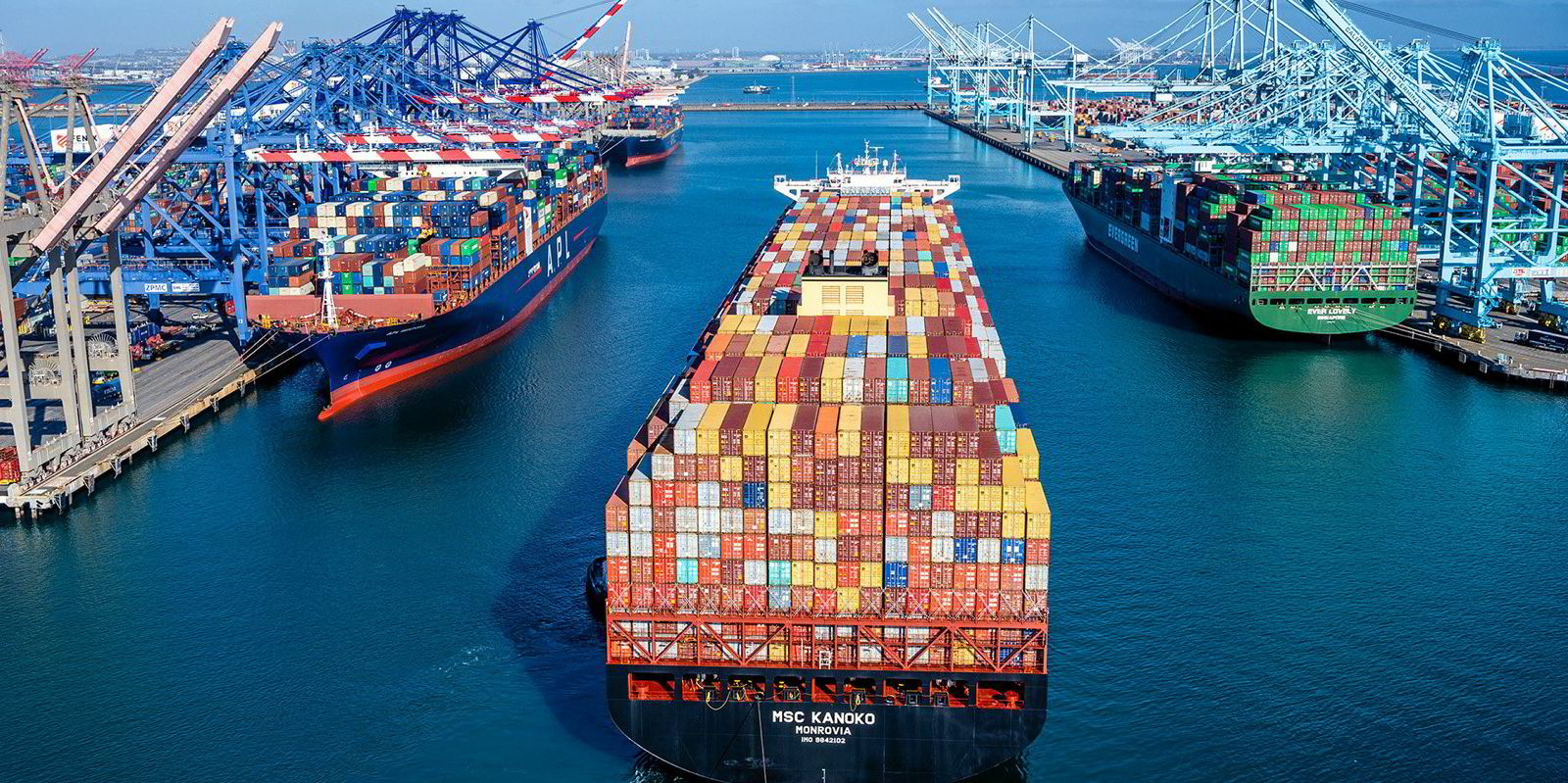Container volumes at the Port of Los Angeles are down significantly and may continue to stay depressed as container ships head to the East Coast to avoid possible delays at the West Coast port caused by ongoing labour talks.
The slump mirrored a similar decline at the neighbouring Port of Long Beach amid talks between the Pacific Maritime Association (PMA) and the International Longshore and Warehouse Union (ILWU) covering dockworkers at terminals from California to Washington state.
“Cargo was purposely shifted away from West Coast ports to the east and the US Gulf as they looked at de-risking their supply chain based on the labour contract negotiations,” Port of Los Angeles executive director Gene Seroka said on Thursday during the port’s monthly news briefing.
North America’s busiest port moved about 688,000 teu in April, down 22% from April 2022, which was the port’s second busiest April on record due to the pandemic.
That was 10% more container volume than what was shipped in March of this year and 38% more volume than what arrived in February, but it is very unlikely that 2023 volume will come close to 2022 volume of 9.9m teu, Seroka said.
“It’s very early to predict, but our estimate right now is below 9m teu,” he said.
“Once there’s a labour contract, we’ll see how much and how fast cargo shifts back to the West Coast and we’ll do everything we can to bring it back here.”
The declines come as the PMA and ILWU dockworkers have been negotiating a new labour contract since May 2022 to replace the deal that expired in July.

The PMA, which represents 70 ocean carriers and terminal operators at 29 US West Coast ports, has accused the ILWU of intentionally disrupting operations three times at the two California ports since March.
The ILWU has denied the allegations, but the dragged-out talks and accusations have nonetheless prompted cargo to shift to East Coast ports to ensure their shipments make it to their destinations on time.
Seroka said it will probably take a matter of months to shift containerised cargo that is now shipped to the East Coast back to the West Coast once a labour deal is finalised.
“Retailers tell me to change allocations it usually takes between 30 and 45 days, but nothing’s guaranteed, so we’re going to be back on airplanes crisscrossing the country, trying to talk to as many folks as we can and make sure that we’re going after every pound of freight possible.”
Economic factors such as inflation, interest rates and consumer confidence will also influence future volumes at the port, he said.
“The economy will play a role,” the executive said.
On Friday, the Port of Long Beach reported that it moved nearly 656,000 teu last month, down 20.1% from the record volumes in April 2022.




